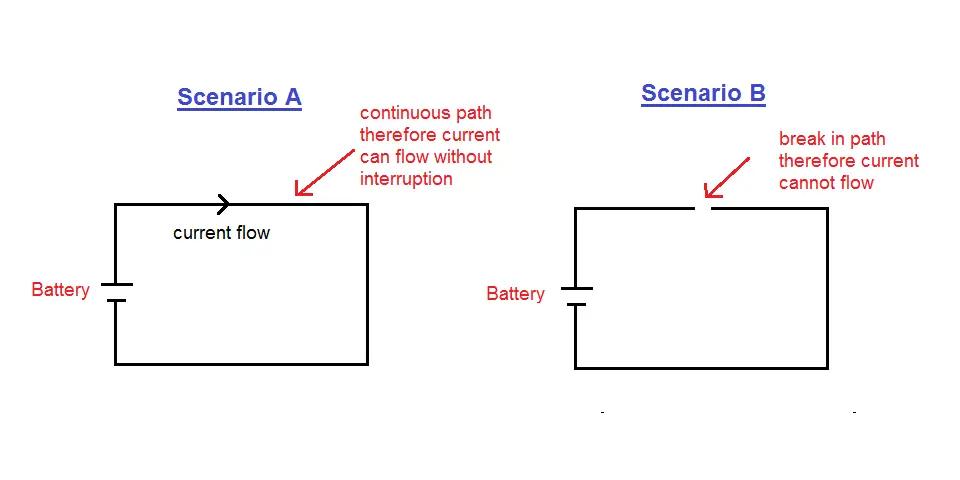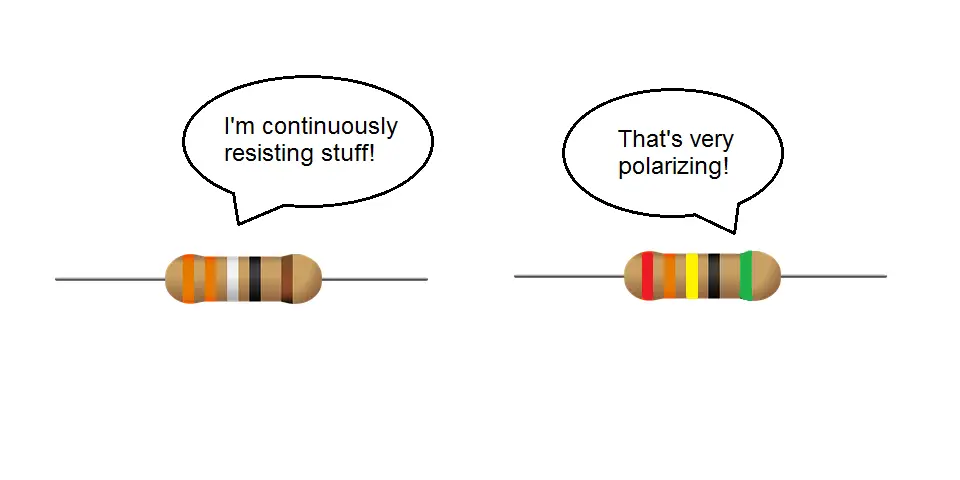Resistors are one of the most common components used in electrical and electronic applications. They have many uses which include limiting current flow, dividing voltages, blocking transmission signals, and biassing active elements.
Polarity and Continuity are terminologies that are associated with electrical and electronic components, and questions always arise whether resistors have polarity and continuity. This article shall delve deeper into these two concepts and see if resistors have polarity or continuity.
What is polarity?
Polarity is a term that is used in many branches of science and technology such as electricity, magnetism, and chemistry. It is described as ; “a state or condition of an atom or molecule that exhibits opposite properties or powers in opposite parts or directions.” For example, a magnet is known for having North and South poles. Here magnetic polarity refers to the orientation of these poles in space.
But, the polarity we are concerned about in this article pertains to electricity. So what exactly is electric polarity?
Electric Polarity
Voltage can be defined as an Electromotive Force (EMF) between two points. When we are talking about these two points, we are looking at which point has more electrons than the other. The point that has more electrons is the Negative Pole, making the other point a Positive Pole.
Now when a conductor (such as wire) is used to close the path between the two poles, electrons flow from the negative pole to the positive pole (this flow of electrons is known as current). An example of this is a battery which has negative and positive terminals (or poles). Connecting a wire across the two terminals will cause electrons to flow from the negative terminal to the positive.
Components and polarity
So how does polarity relate to electrical and electronic components? They can be divided into two categories when it comes to polarity;
- Polarised or,
- Non-Polarized
Non-Polarised components do not have any polarity. These components can be placed in a circuit in any orientation without altering their functionality.
Polarised components on the other hand have polarity. This means they have been constructed in a way where one of their terminals has more electrons than the other. They will have one negative and positive terminal. Therefore they will have to be placed in a circuit in the right orientation (their terminals must match the terminals of the voltage source). A common example of a polarised component is a battery.
Do resistors have polarity?
No, resistors do not have polarity. They do not have positive or negative terminals which means that they can be placed in any orientation when connecting them up in a circuit. The main job of a resistor is to provide resistance to limit the flow of current. They are designed uniformly so that one terminal will not have more electrons than the other. The result being no matter what their orientation, they will still provide the same resistance.
A common analogy to better understand this is a road with bumps. Just like a resistor, the bumps on the road provide resistance when you drive past them. And just like a resistor, it doesn’t matter which way you are travelling, the bumps on the road are still going to provide the same resistance.
What is continuity?
Continuity is a term used in many aspects of life. It is defined as “the unbroken and consistent existence or operation of something over time.” When it comes to electricity the concept remains the same. Electric continuity refers to the presence of a continuous unbroken path for current to flow.
Imagine we had a closed circuit with a battery source as seen below.

The image below highlights two scenarios. Scenario A has a wire that connects the positive terminal to the negative terminal without any physical breaks in it. Therefore it is said to have continuity as current can flow from the negative terminal to the positive terminal without interruption.
In Scenario B we see there is a physical break in the wire. In this instance current cannot flow from the negative terminal of the battery to the positive as there is no ‘continuous path’. Therefore the wire has no continuity.
Do resistors have continuity?
Yes, resistors do have continuity. Even though they might limit the flow of electrons (by providing a resistance), they still provide a continuous path for the electrons to through.
Testing the continuity of a resistor using a multimeter
Knowing if a wire or component has continuity or not is essential when it comes to circuit analysis. Wires and components are insulated to protect us from potential harm. But, if damage occurs it might be hard to detect it by just looking at it as the insulation might obstruct the damage.
A multimeter is an electrical/electronic measurement tool used to measure things like voltage, current, resistance, etc. It also has the ability to test continuity. The multimeter has two probes that get placed on two ends of wire for example. It then sends a current from one probe to the other (via the wire). If there is a break in the wire the multimeter will remain silent indicating no continuity. But, if the other probe receives the signal, this indicates that there is no break in the wire (hence it has continuity), and the multimeter will inform you with an audible beep.
However, when testing the continuity of resistors, some issues arise. The multimeter’s continuity function works only below a certain threshold value of resistance. Anything above this threshold and the multimeter won’t be able to detect if there is continuity or not. So, even if a resistor with a high value of resistance has continuity, the multimeter might not pick it up.





